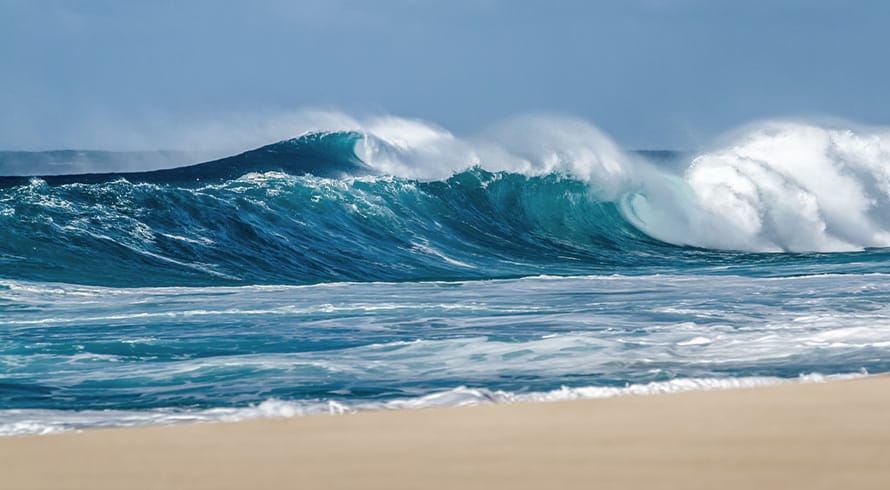Revised Draft Regulations for Implementing and Enforcing Priority Air Quality Management Plans will impact reclamation operations
At a glance
- On 17 May 2024, the Minister of Forestry, Fisheries and the Environment published the proposed Regulations for Implementing and Enforcing Priority Area Air Quality Management Plans (2024 Draft Regulations) for comment.
- Underpinned by a litigious past, the 2024 Draft Regulations are long overdue and are set to impact private sector players whose operations are located within declared priority air quality areas.
- Comments on the 2024 Draft Regulations are due on or before 18 June 2024.
Underpinned by a litigious past, the 2024 Draft Regulations are long overdue and are set to impact private sector players whose operations are located within declared priority air quality areas (PAQAs).
Legal framework
The National Environmental Management: Air Quality Act 39 of 2004 (NEMAQA) authorises the Minister to declare an area as a PAQA if it is reasonably believed that the prescribed National Ambient Air Quality Standards (NAAQS) are or may be exceeded, or if other factors may cause a significant negative impact on the area’s air quality. Once a PAQA has been declared, the Minister or MEC must publish an approved Air Quality Management Plan (AQMP) that inter alia seeks to co-ordinate air quality management and issues in the PAQA. The Minister or MEC may then proceed to prescribe regulations deemed necessary for implementing and enforcing approved AQMPs (although the High Court has ruled that there is an obligation to do so, as discussed below).
Since the promulgation of NEMAQA, three PAQAs have been declared: the Vaal Triangle Air-Shed, Highveld and Waterberg Bojanala priority areas. As set out below, while this was followed by the publication of their respective AQMPs, regulations for the implementation of the AQMP were only published in respect of the Vaal Triangle PAQA.
![13524-Table[41] 13524-Table[41]](/export/sites/cdh/news/publications/2024/Practice/Environmental/Downloads/13524-Table41.png)
Deadly Air Case explained
Owing to its particularly poor air quality, the Highveld PAQA has historically been the focus of several civil organisations advocating for environmental human rights issues. Following engagement with the then Minister and frustrated by the lack of progress in respect of air quality improvement in the Highveld PAQA, High Court proceedings were instituted against the Minister in what became known as the “Deadly Air Case”.
At the heart of the Deadly Air Case were the arguments that: (i) the Minister breached the right to a healthy environment, as entrenched in section 24(a) of the Bill of Rights, as a result of the poor air quality of the Highveld PAQA, which right is immediately realisable by the state; and (ii) the Minister has a legal duty to prescribe regulations to implement and enforce the Highveld PAQA AQMP. See here for a previous alert in which we unpacked the detail of the case.
The court ultimately upheld both arguments, directing the Minister to prescribe the necessary regulations for the implementation and enforcement of the Highveld PAQA AQMPs.
The Minister sought leave to appeal the decision on the grounds that there is a discretion, as opposed to an obligation, to publish regulations in terms of NEMAQA for implementation of AQMPs. While leave to appeal was granted in March 2023, as far as we are aware, there have been no developments since.
Interim developments
While the Deadly Air Case was still ongoing, and prior to judgment being handed down by the High Court, the Minister proceeded to publish the first set of proposed regulations on 11 February 2022 (2022 Draft Regulations). This was followed by revised drafts in August 2022 and March 2023, with the 2024 Draft Regulations being the most recent.
2024 Draft Regulations and their impact
When compared to the 2022 Draft Regulations, there have been some notable changes made in the various sets of revised draft regulations, including extension of the ambit of their application. The 2022 Draft Regulations initially proposed to apply only to responsible entities identified in terms of AQMPs, including those entities conducting listed activities requiring air emission licences; controlled emitters; mining operations; and national, provincial and local spheres of government. This scope was extended in the subsequent drafts to include not only mining, but also prospecting, exploration and production operations. Most recently, the 2024 Draft Regulations further broaden the group of impacted stakeholders by including reclamation operations in respect of historical mine dumps. That being said, on a strict reading of the 2024 Draft Regulations, it remains limited to those stakeholders assigned responsibility in terms of AQMPs.
Unlike the 2022 Draft Regulations, but retaining what was proposed in 2023, the 2024 Draft Regulations require all priority area AQMPs to include measurable emission reduction targets. All priority area AQMPs that were previously published must be reviewed to include such targets within two years from the commencement of the 2024 Draft Regulations, once promulgated (review period). It is understood that the review period will essentially provide affected stakeholders with some additional time, as emission reduction targets are not present in the existing AQMPs that were previously published.
Once AQMPs, or reviewed AQMPs, containing emission reduction targets have been published, affected stakeholders will have six months to compile and submit emission reduction and management plans (ERMPs) that align with the AQMPs for approval. Unlike what was prescribed in any of the previous draft sets of regulations, the 2024 Draft Regulations require that ERMPs provide for specific emission reduction targets and implementation timeframes. This is arguably more stringent than what was previously proposed, where only specification of emission reduction activities (as opposed to specific targets) was required.
The 2024 Draft Regulations also, for the first time, stipulate a timeframe for the licensing approval (or refusal) process, being within 60 days of submission of the ERMP.
As provided in all previous drafts, the responsibility to fund implementation of AQMPs rests with the relevant identified stakeholder. While it is understood that this will extend to ERMPs, as they are a means to ensure AQMP implementation, the 2024 Draft Regulations should be amended to be clear on this point.
Annual progress reporting obligations by 31 March of each year remain unchanged, as does the obligation to review AQMPs every five years, the latter of which will trigger a need to revise and obtain approval of ERMPs.
For the first time, provision is also made in the 2024 Draft Regulations to cater for “any special permission or arrangement relating to emission standards granted to an identified stakeholder”, which must be considered upon implementation of the 2024 Draft Regulations. It is well known that several large-scale emitters are unable to comply with the prescribed new plant minimum emission standards, with extension or other special arrangements having been agreed upon with Government. Considering the history of the Deadly Air Case, this provision is therefore likely to attract criticism from civil organisations.
Upon the promulgation of the 2024 Draft Regulations, the Vaal Triangle Priority Area AQMP Implementation Regulations, 2009 will also be repealed, which means the 2024 Draft Regulations, as read against NEMAQA, will be the sole regulatory mechanism regulating all AQMPs going forward.
Conclusion
In addition to the extension to reclamation operations, the most noteworthy changes are therefore the proposed introduction of measurable emission targets in ERMPs and provision being made for those already granted special permission or arrangements in respect of air emission standard compliance.
Failure to submit or implement ERMPs, or otherwise submit annual progress reports, are listed as offences for which fines of up to R5 million or five years’ imprisonment, or both, can be imposed upon first conviction.
Any subsequent convictions can incur a fine of up to R10 million or 10 years’ imprisonment, or both.
Comments on the 2024 Draft Regulations are due on or before 18 June 2024.
The information and material published on this website is provided for general purposes only and does not constitute legal advice. We make every effort to ensure that the content is updated regularly and to offer the most current and accurate information. Please consult one of our lawyers on any specific legal problem or matter. We accept no responsibility for any loss or damage, whether direct or consequential, which may arise from reliance on the information contained in these pages. Please refer to our full terms and conditions. Copyright © 2025 Cliffe Dekker Hofmeyr. All rights reserved. For permission to reproduce an article or publication, please contact us cliffedekkerhofmeyr@cdhlegal.com.
Subscribe
We support our clients’ strategic and operational needs by offering innovative, integrated and high quality thought leadership. To stay up to date on the latest legal developments that may potentially impact your business, subscribe to our alerts, seminar and webinar invitations.
Subscribe




